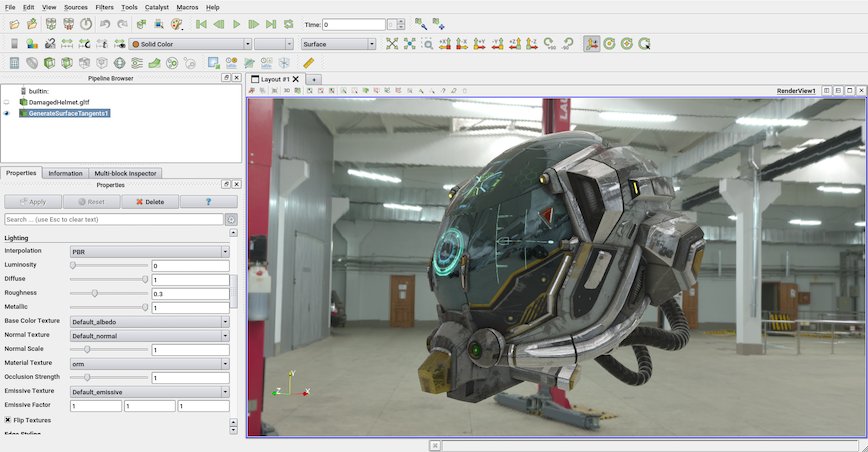

Recorder, then run these scripts using pvbatch. We are going to create scripts using the trace
#Paraview training how to
Help for more information on how to use this feature. Pvbatch can be run on the same nodes as your simulation. projects/viz/paraview/bin/pvbatch_chama_mesa 1 10 FY123456 /projects/viz/training/paraview/whipple-A.py 14.3.2.2. (On the Start button, type cmd, then click on ĭelete the Screenshot and Animation you made above. Uncomment the line that says renderView*.ViewSize. Since we are on Windows, we will create a python trace, and use pvpythonĬorrect the path to the input data and output screenshots orĪnimations (not necessary, since you made the trace) Single process, such as this training, pvpython will substitute. If you are training on Windows, pvbatch does not exist. Applications/ParaView x.x.x/Contents/bin. If you are training on OS X, open a terminal window, and cd to If you are training on Linux, pvbatch will exist in the bin
#Paraview training windows
This section describes how to use pvbatch when on Windows PCs. Generic user specific section 14.3.1.1. pvbatch only acceptsĬommands from input scripts, and pvbatch will run in parallel if it wasīuilt using MPI. The data was generated with the open-source flow solver Xcompact3D on ARCHER2.Pvbatch is like pvpython, with two exceptions.

High-fidelity turbulence-resolving simulations allow us to study the dynamics of the interacting turbine wakes, providing insight into complex flow phenomena such as wake meandering, tip and hub vortex breakdown, and the interaction of the wind farm with the atmospheric boundary layer. Turbine clustering suffers some drawbacks, as downstream turbines operate within the wake of upstream ones, resulting in the reduction of their power output due to wind speed deceleration and the increase of fatigue loads due to increased wind fluctuations. Modern large-scale wind farms consist of multiple turbines clustered together in wind-rich sites. Imperial College London, Department of Aeronautics Flow within and around a large wind farm The cover image has slightly increased contrast by post-processing, but the video remains the original output of ParaView. Volume rendering capabilities of ParaView, in particular, Intel® OSPRay path-tracer was used for realistic lighting and self-shadowing. During 2022 Summer Visualisation Internship, the video was produced on the GPU-enabled Faculty of Engineering Linux system at the University of Leeds. The model, PMPIC, was parallelised in an eCSE project (eCSE12-10), and run on ARCHER2. Simulation was produced using a revolutionary parcel-based cloud model developed by the University of St Andrews, the University of Leeds and EPCC. There are seven timesteps, showing cloud development over time. In the animation, an idealised cloud is shown, which is produced by a rising warm and moist air mass. University of Leeds, School of Earth and Enviroment Ray-traced Cloud Development Simulation Video The novelty of this work lies in the ability to determine and quantify the spatiotemporal distribution of airborne pathogens and the infection risk in different indoor scenarios, considering the turbulent mixing of particles on their spread. The aim of the research is to develop a numerical tool to predict accurately the spread of airborne pathogens carried by very small expiratory particles in different indoor environments. The particle’s ability to stay airborne is affected by its diameter: the largest particles (red and yellow) fall out close to the speaking person, while the smaller ones (blue) are entrained into the exhalation jet and transported throughout the room. A 3D overview figure of the whole room is shown in the bottom right-hand corner for spatial context. The image reveals the extent of expiratory particle dispersion by the turbulent exhalation jet during speaking, with this high-resolution simulation run on the ARCHER2 system. University of Birmingham, Department of Civil Engineering Expiratory particle dispersion by turbulent exhalation jet during speaking It will use the Blackboard Collaborate platform. In this webinar we invite entrants from the 2022 ARCHER2 Image and Video Competition to talk about their work, and the science behind their stunning images and videos.


 0 kommentar(er)
0 kommentar(er)
